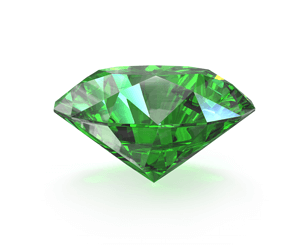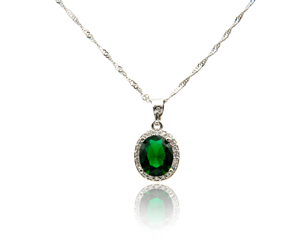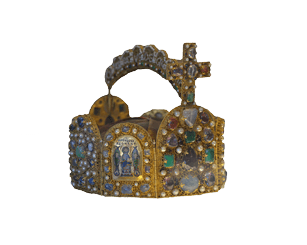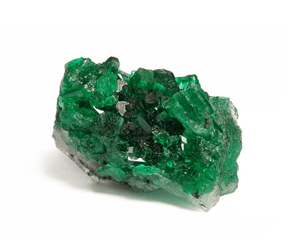Buy emerald
Showing all 10 results
-
Sale!
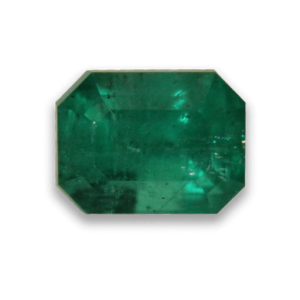
Emerald 1.31 ct
€390,00 Tax included
Includes 20% Taxplus shippingView product -
Sale!
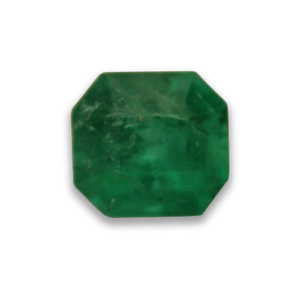
Emerald 1.39 ct
€480,00 Tax included
Includes 20% Taxplus shippingView product -
Sale!
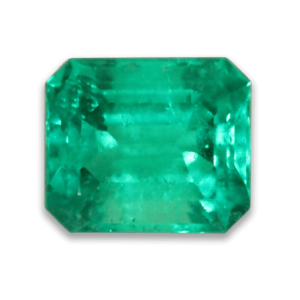
Emerald 6.60 ct
€39.000,00 Tax included
Includes 20% Taxplus shippingView product -

Emerald 1.78 ct
€2.000,00 Tax included
Includes 20% Taxplus shippingView product -
Sale!
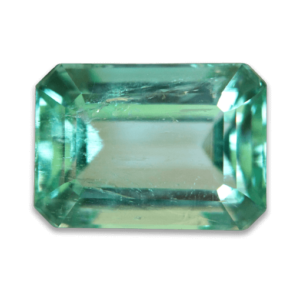
Emerald 8.35 ct
€11.160,00 Tax included
Includes 20% Taxplus shippingView product -
Sale!
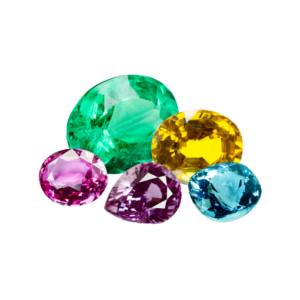
Find my gem 0.5-50 ct
€500,00 Tax included
Includes 20% Taxplus shippingView product -
Sale!
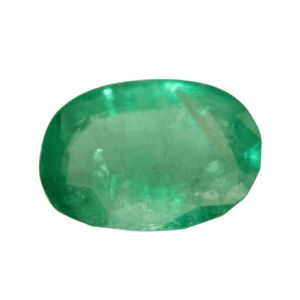
Emerald 2.11 ct
€560,00 Tax included
Includes 20% Taxplus shippingView product -
Sale!
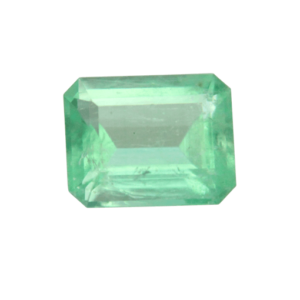
Emerald 2.40 ct
€1.280,00 Tax included
Includes 20% Taxplus shippingView product -
Sale!
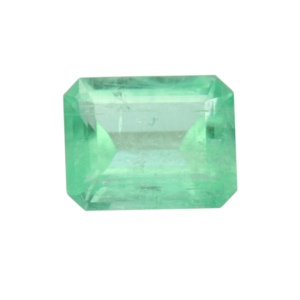
Emerald 2.47 ct
€1.360,00 Tax included
Includes 20% Taxplus shippingView product
The emerald – a popular gemstone even in ancient times
“Wise words are rarer than emeralds” – this Egyptian wisdom comes from the year 2,500 BC. It is the oldest known name of the emerald, which, according to current research, has been used as a gemstone for the longest of all stones.
The green gem was popular with Cleopatra and Caesar. In ancient Rome it was believed that the emerald made men good speakers. This is not the only reason why the Roman emperor is said to have almost hoarded the green stone. A healing effect has been attributed to the emerald. This belief was adopted by the Arabs and found its way to Spain during the Moorish rule. From there he later made it to South America. In Brazil, in particular, gives young doctors an emerald ring for exams. In Arabia and North Africa, too, people are still suspicious of a doctor if they don’t wear an emerald on their fingers.
In Egypt, however, the stone was a symbol of fertility and life. As early as 330 BC There is evidence that gemstones were mined here. Cleopatra claimed ownership of all the emerald mines in Egypt during her reign. Her personal seal was made from an emerald.
Today the emerald is considered a symbol of loyalty, a new beginning, peace and security. It is still valued mainly by wealthy and famous people.
Emerald green
The term comes from the Greek “emeraldos” and means something like “green stone”.
The emerald gets its green color from chrome or vanadium. There was a dispute among gemologists because chromium was originally known as the only coloring element. Then it was found that emeralds from Colombia also contain vanadium. The question was raised whether emeralds colored by vanadium (like those from Zambia) should even be called that.
Today the Colombian stones are considered to be the most valuable emeralds due to their deep green hue.
The green tones of this gemstone range from light to deep green.
use
The emerald has already been used in many historical pieces of jewelry. For example, the crown of Charlemagne was set with emeralds. The Maximilian emerald was worn by Maximilian, Emperor of Mexico. The 21.4 carat emerald was made into a ring for this purpose.
There are also examples of famous jewelry with emeralds in recent history. The actress Elizabeth Taylor owned numerous emeralds, in necklaces, earrings and also as pendants, among other jewels. One of her most valuable pieces was a diamond necklace set with emeralds. This chain was set with 16 octagonal, Colombian emeralds, which in turn were set with diamonds.
Emeralds not only go well with diamonds, the green stone also comes into its own in pieces of jewelry made of white or yellow gold.
The emerald is loud American Gem Society the birthstone of the month of May. Its symbolism as a stone of peace and a new beginning makes it a beautiful jewelry gift not only for May-born babies.
Origin & mining sites
Until the high Middle Ages, sites were only known in Egypt and the Austrian Habach Valley. Colombia was also added from the 16th century.
Spanish conquerors discovered the well-hidden mines of the Muzo Indians about twenty years after the conquest of Colombia.
In addition to muzo, emerald is also mined in Chivor in Colombia. Colombian emeralds are characterized by their high quality and deep green. They are therefore considered to be the most valuable emeralds.
Around 1830 emerald was discovered in Russia, in the Ural Mountains. Other deposits are in Norway, Australia, Brazil, South Africa, Zambia, Zimbabwe, Pakistan, Afghanistan and the USA
properties
The emerald belongs to the beryl group. Beryl is a mineral, which is also the Aquamarine, the Heliodorus, the Morganite , which is based on goshenite and red beryl.
The emerald has a hardness of 7.5 to 8 on the Mohs scale.
Inclusions
Most emeralds have inclusions that are clearly visible. Eye-clean stones are rare – even rarer than with ruby or sapphire . The inclusions of the emerald even have their own name: “Jardin” (French for garden).
treatment
In contrast to ruby and sapphire the emerald is not heated, but rather oiled. It is put under high pressure in a pressure vessel with cedar oil, which causes the oil to enter the cracks.
In addition to cedar oil, resins and synthetic resins are also used for this type of treatment. The best known is Opticon. After treatment with Opticon, it appears that the stone has never been cracked.
Oiling is accepted as a treatment technique for emeralds.
The emerald cut
A separate cut was developed for the emerald, the emerald cut. It is an octagon cut with “stairs”, through which the green color of this stone is emphasized.
The emerald cut is a facet cut. In contrast to the smooth cabochon cut, facet cuts can be recognized by their corners and edges. This reflects the light so that the color of the stones comes into its own.
There is no prescribed ratio for length and width dimensions for the emerald cut. Therefore you can find stones with an almost square emerald cut, but also those that are rather elongated.
A perfect emerald cut has 57 facets, 25 of them in the upper part and 32 in the lower part. The number of facets can vary. How many facets are cut is judged from stone to stone and depends on the quality of the rough stone.
